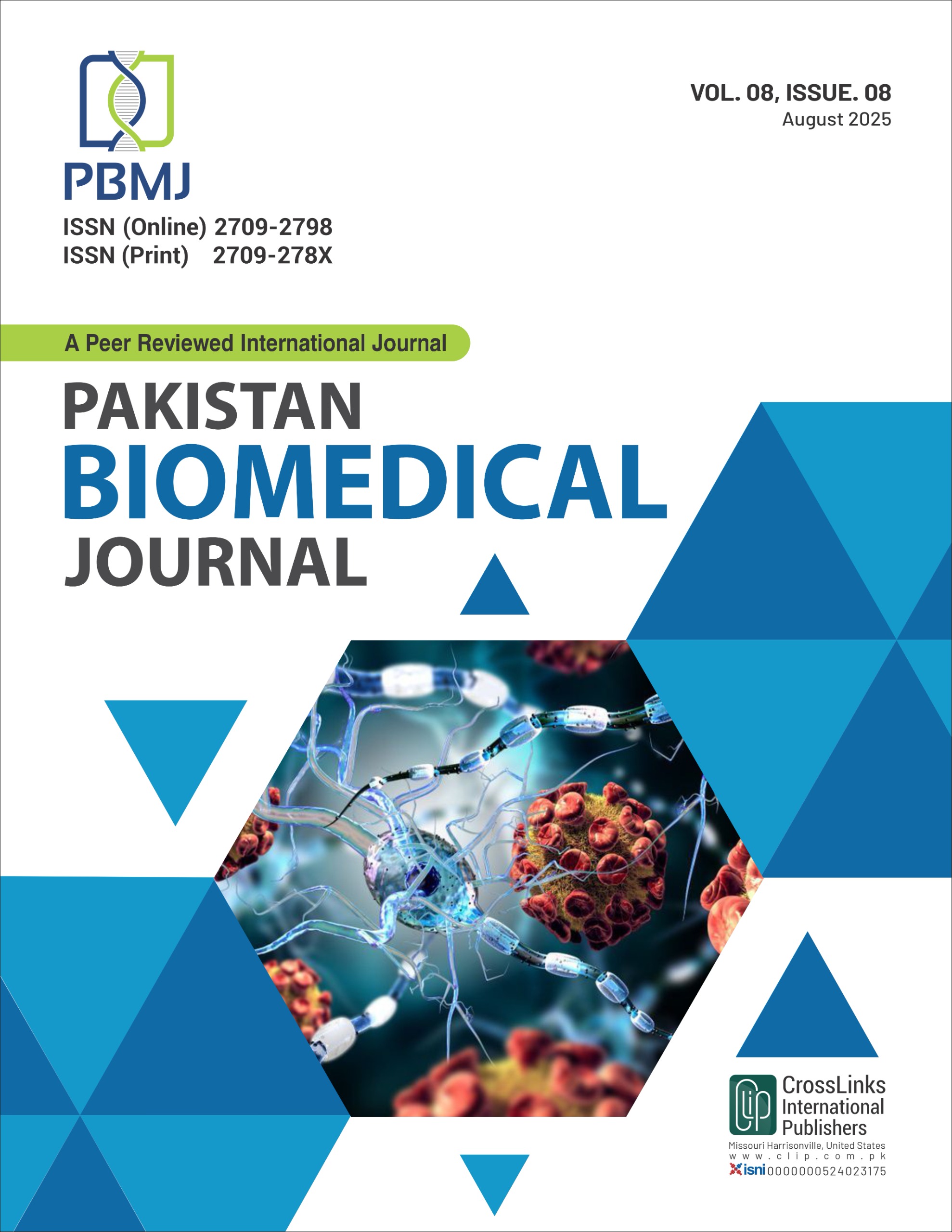Glycemic Index and Load: Key Dietary Factors in the Pathogenesis of Insulin Resistance: Glycemic Index and Load
Glycemic Index and Load
DOI:
https://doi.org/10.54393/pbmj.v8i8.1280Abstract
Insulin resistance is the key parameter in development of type 2 diabetes and also leads to various metabolic disorders globally. Recent evidences demonstrate the vital role of glycemic index (GI) and glycemic load (GL) in glucose metabolism and insulin sensitivity.
The glycemic index determines how quickly carbohydrates-rich food elevate the glucose levels in the blood. While Glycemic load represents both quality and quantity of carbohydrates which are consumed. Actually, these factors are directly involved in glucose spike in the blood that is further responsible of insulin secretions. An increased demand of insulin can increase the secretions of insulin from pancreatic beta cells. Increased level of insulin (hyperinsulinemia) can cause insulin resistance. It happens when cells in the body, specifically in muscle, fat, and liver tissues show less response to insulin's signal to take up glucose from the bloodstream.
Recent studies has demonstrated through various randomized clinical trials that there is an important link between GI and insulin resistance. They showed that low GI-index foods can reduce the spike of blood glucose level which further can reduce the insulin secretions that can reduce the insulin resistance. A high GI-index diet can cause metabolic dysfunctions in non-diabetic adults [1]. Another research linked higher dietary GI and GL with increased pancreatic steatosis risk, describing the metabolic burden that high GI-index diet affect the pancreatic health [2]. Furthermore, some investigations have suggested that diets with high GI and GL could exacerbate insulin resistance, potentially very serious outcomes in inflammatory conditions such as COVID-19 [3].
All these studies recommend dietary modifications to control or reverse the type 2 diabetes. The use of low GI and low GL based diet can protect individuals from type 2 diabetes. Specifically, we have to modify our daily diet like grain flour, white rice, starchy vegetables, and sugary food. All these foods are high in GI and GL. More concerning for type 2 diabetes patients if they are taking medications but don’t want to modify their diet, they are just supressing their type 2 diabetes with medicines not cutting the roots of this dietary disorder. People got this disorder from their dinning tables but for cure they rely on clinics only, it is better if they first change their food placed dining tables. May be this modification can protect them from continuous visits of clinics and pharmacies. Public health policies and clinical guidelines should incorporate the GI and GL considerations to reduce the growing burden of insulin resistance and its complications effectively.
In conclusion, understanding about GI and GL is very important in both diabetes management and prevention. These factors will open new strategies to cope the type 2 diabetes and other metabolic disorders as well. Future research should continue to design the low GI and low GL based personalized nutritional approaches for reducing the insulin resistance.
References
Yu YT, Fu YH, Chen YH, Fang YW, Tsai MH. Effect of Dietary Glycemic Index on Insulin Resistance in Adults Without Diabetes Mellitus: A Systematic Review and Meta-Analysis. Frontiers in Nutrition. 2025 Feb; 12: 01-12. doi: 10.3389/fnut.2025.1458353. DOI: https://doi.org/10.3389/fnut.2025.1458353
Bahrizadeh M, Fotros D, Chegini M, Sadeghi A, Hekmatdoost A, Yari Z. Association of Dietary Glycemic Index and Glycemic Load with Pancreatic Steatosis: A Case Control Study. BMC Endocrine Disorders. 2025 Mar; 25(1): 2-7. doi: 10.1186/s12902-025-01909-0. DOI: https://doi.org/10.1186/s12902-025-01909-0
Shamshirgardi E, Masoumi SJ, Kazemi A, Nouri M, Shahsavani Z, Clark CC et al. Dietary Glycemic Index, Glycemic Load, and Risk of COVID-19: A Prospective Cohort Study. Journal of Health, Population and Nutrition. 2025 Jun; 44(1): 2-11. doi: 10.1186/s41043-025-00958-4. DOI: https://doi.org/10.1186/s41043-025-00958-4
Downloads
Published
How to Cite
Issue
Section
License
Copyright (c) 2025 Pakistan BioMedical Journal

This work is licensed under a Creative Commons Attribution 4.0 International License.
This is an open-access journal and all the published articles / items are distributed under the terms of the Creative Commons Attribution License, which permits unrestricted use, distribution, and reproduction in any medium, provided the original author and source are credited. For comments editor@pakistanbmj.com











